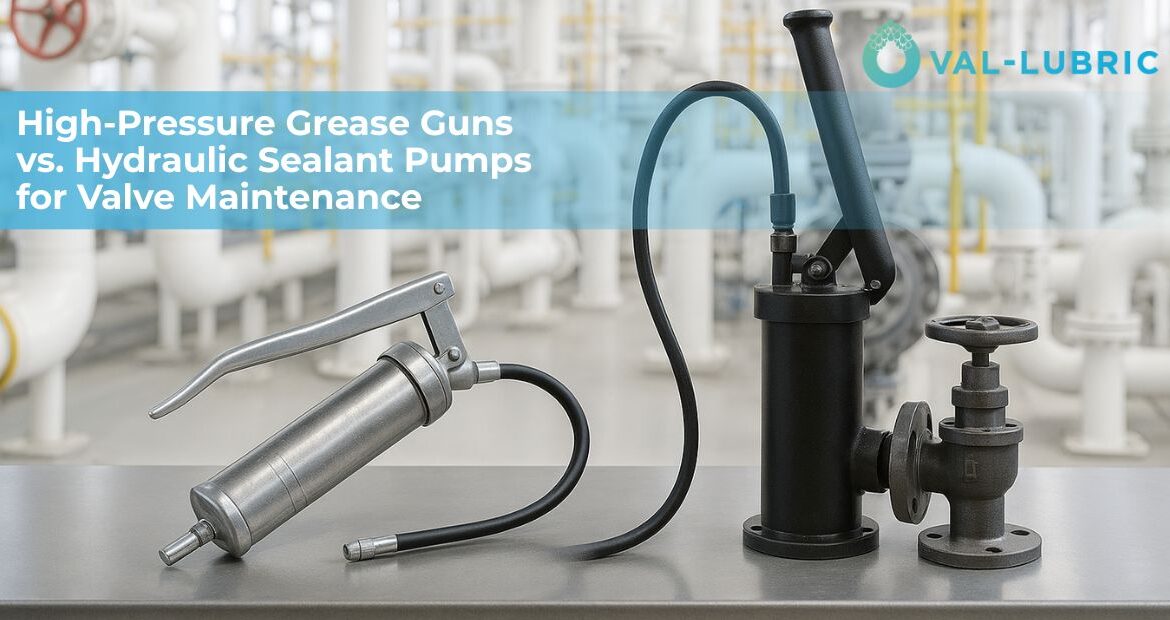Introduction
When it comes to valve maintenance in oil & gas, petrochemical, and heavy industries, choosing the right lubrication equipment is crucial. Two tools dominate the discussion: the high-pressure grease gun and the hydraulic sealant pump. Both serve vital roles in keeping valves leak-free and operational, but they differ in pressure capacity, fluid volume, and applications. In this article, we’ll compare them side by side and help you decide which tool fits your needs.
What Is a High-Pressure Grease Gun?
A high-pressure grease gun is designed to deliver lubrication at extremely high pressure—often up to 15,000 PSI. This makes it ideal for pinpoint lubrication of fittings and valves that require forceful grease injection.
Key features:
-
Delivers small, concentrated shots of lubricant.
-
Portable and easy to operate in the field.
-
Widely used for oilfield valves, compressors, and heavy equipment.
What Is a Hydraulic Sealant Pump?
A hydraulic sealant pump—sometimes called a hydraulic hand pump—is a larger-capacity lubrication tool designed for extended operation. For example, Val-Lubric’s Hydraulic Sealant Pump operates at 10,000–11,000 PSI and includes a large fluid reservoir, allowing longer use between refills.
Key features:
-
High pressure (10,000–11,000 PSI).
-
Large fluid capacity for extended use.
-
Designed for lubricated valves, ball valves, gate valves, and plug valves.
-
Suitable for pipelines carrying oil, gas, chemicals, and hydrocarbons.
Comparison: Grease Guns vs. Sealant Pumps
| Feature | High-Pressure Grease Gun | Hydraulic Sealant Pump |
|---|---|---|
| Pressure | Up to 15,000 PSI | 10,000–11,000 PSI |
| Capacity | Small cartridge (≈12 oz) | Large fluid reservoir |
| Applications | Single valve lubrication, field service | Large-scale valve maintenance, pipelines, and refineries |
| Best for | Precision lubrication | Continuous, high-volume lubrication |
When to Use a High-Pressure Grease Gun
-
Servicing individual valves that resist lubrication.
-
Providing a quick shot of grease under extreme pressure.
-
Field maintenance where portability is essential.
When to Use a Hydraulic Sealant Pump
-
Extended valve maintenance campaigns across multiple valves.
-
Pipelines in oil & gas, chemical plants, and refineries.
-
Situations requiring high volume lubrication without frequent refills.
-
Industries such as mining, marine, and municipal utilities.
Benefits of Choosing the Right Tool
✔ Prevents costly valve failures.
✔ Improves safety and efficiency during maintenance.
✔ Extends the life of critical assets in oil & gas and industrial plants.
✔ Ensures compliance with operational safety standards.
Internal Link Recommendation
Looking for a reliable pump for your maintenance operations? Explore the Val-Lubric Hydraulic Sealant Pump, engineered with 10,000–11,000 PSI capacity and designed for heavy-duty valve maintenance.
Conclusion
Both high-pressure grease guns and hydraulic sealant pumps are indispensable tools in valve maintenance. The grease gun is best for targeted, high-pressure applications, while the sealant pump is ideal for continuous, high-volume lubrication tasks. By selecting the right tool for the job, maintenance engineers can ensure efficient operations, minimise downtime, and extend the service life of critical valves.

